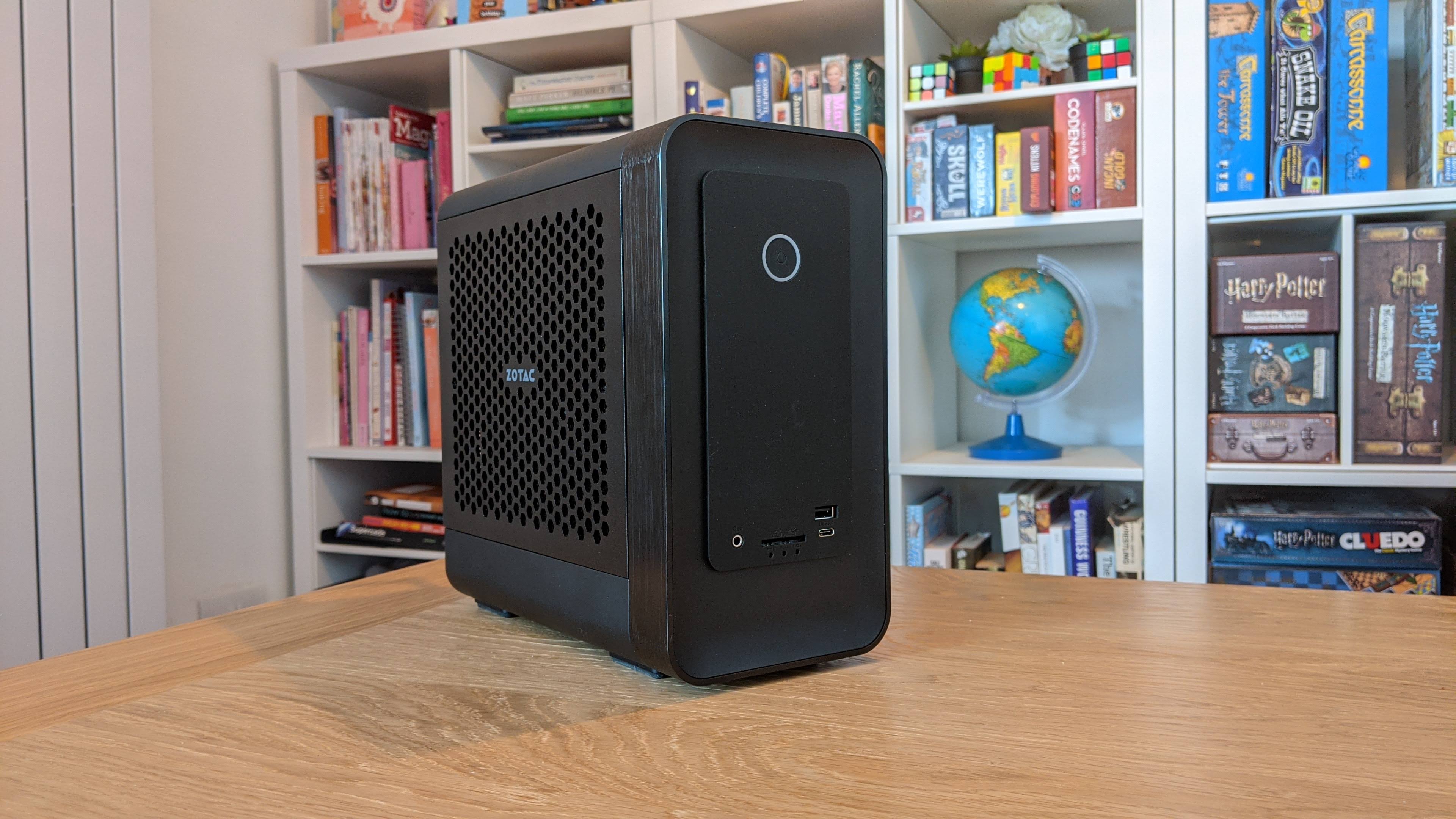TechRadar Verdict
Zotac's miniature marvel is easy to work with, crams in some seriously powerful full-sized PC parts, and offers a limited upgrade path too.
Pros
- +
Fantastic performance
- +
Very compact case
- +
Clever cooling
Cons
- -
Can be very loud
- -
Narrow upgrade potential
- -
Dull to look at
Why you can trust TechRadar
Two-minute review
Not everyone needs a big shiny box on their desk to show off. And not everyone spends all day every day gaming hard. Zotac's latest mini-PC experiment, by that metric, is not for everyone - though it'll make most people happy.
It probably isn't for RGB-addled PC-building hardcores, though many will likely be interested given that it is a way to actually get hold of decent PC components amidst the current drought. Creative types will likely have their sights set on a new iMac. But for those on the PC side of the fence, for gamers who care more about the game than the pretty lights surrounding it, this is a powerful PC for those who just want a powerful PC. It looks pretty dull, but it's a machine that'll get out of the way and let you work hard and game harder.
Design-wise it borrows heavily from Intel's Ghost Canyon NUC, offering split-compartment cooling and some very sensible tinker-friendly component layout inside, though the capacity is larger than that NUC. This barebones box asks very little, only that you insert your own RAM and storage, tasks anyone can complete, made even easier by its easy to-open case. It's fairly convenient, with all the important ports accessible from the front, though we might have appreciated it if slightly more USB had been routed from the back.
Everything's air cooled, which (given the need to shift heat out of the Magus One's relatively slim 8.3L capacity) can lead to some fairly cacophonous background noise, particularly with all of its fans working in sync. But its cooling is effective, with ventilation very rarely hitting a thermal peak, and the performance is very, very solid.
The Zotac Zbox Magnus One ECM73070C does wallow in its middle ground a little. It's small enough that you'll need to be selective about any upgrades, and you'll have to deal with the relatively low capacity of its 500W PSU if you're ever looking to kick its GPU up a notch - something you wouldn't need to worry about on a full-fat desktop PC. It's a lot bigger than many of Zotac's other mini PCs, though they rarely come with the luxury of a socketed CPU (or, indeed a discrete GPU).
But honestly that's picking holes for the sake of picking holes. This is some great engineering, and a superb step on the ladder for those not DIY inclined.
Price and availability
Here is the Zotac Zbox Magnus One ECM73070C configuration sent to TechRadar for review:
CPU: 2.9 GHz Intel Core i7-10700 (8-core, up to 4.8 GHz)
Graphics: ZOTAC GAMING GeForce RTX 3070 (8GB GDDR6)
RAM: None supplied (supports 2x DDR4-2933/2666 SO-DIMMs)
Storage: None supplied (1 x 2.5" SATA bay, 1 x M.2 PCIe x4 slot, 1 x M.2 PCIe x4 SSD / Intel Optane memory slot)
Ports: 3 x USB 3.0 (Type-A), 1 x USB 3.0 (Type-C), 4x USB 3.1 (Type-A), 1 x 1Gbps Ethernet, 1 x 2.5Gbps Ethernet, combo audio jack, 3 x DisplayPort 1.4a, 1 x HDMI 2.1 (discrete), 1 x HDMI 1.4 (on-board), SD reader
Connectivity: Killer Wireless AX1650 2×2 Wi-Fi 6 + Bluetooth 5 controller, Killer Ethernet E3000 2.5Gbps controller
Weight: 12.6 pounds (5.72 kg)
Size: 10.5 x 4.9 x 6.8inches (26.6 x 12.6 x 24.9 cm; W x D x H)
Price-wise things are a little murky as it's early days for the Magnus One ECM73070C. Zotac is keeping quiet about MSRPs, and US availability is currently minimal, with few signs of it bar a frankly too-expensive Amazon listing (loaded with an M.2 SSD and 16GB RAM) coming in at an astonishing $3,793, though the same spec is also listed elsewhere (though unavailable at press time) for $2,199. In the UK, this barebones box will apparently be available for a slightly less reachy £1,399; in Australia, preorders are at AU$2,699 at press time.
Sign up for breaking news, reviews, opinion, top tech deals, and more.
Whether you'll actually be able to get one, though, is another matter. We're sure the more nefarious on the PC purchasing market will be looking at this as a parting-out option, though there's probably not an awful lot of aftermarket money to be made on the graphics card - the real issue is the worldwide semiconductor shortage, something Zotac can do nothing about. Prices will almost certainly be a lot more reasonable given a bit of time.
If this still seems too expensive, Zotac has just announced the ECM53060C, which scales back the processor to a Core i5 and the graphics card to an RTX 3060 - no word on pricing yet, but expect a good chunk chipped off the top of the MSRP when it does eventually arrive.
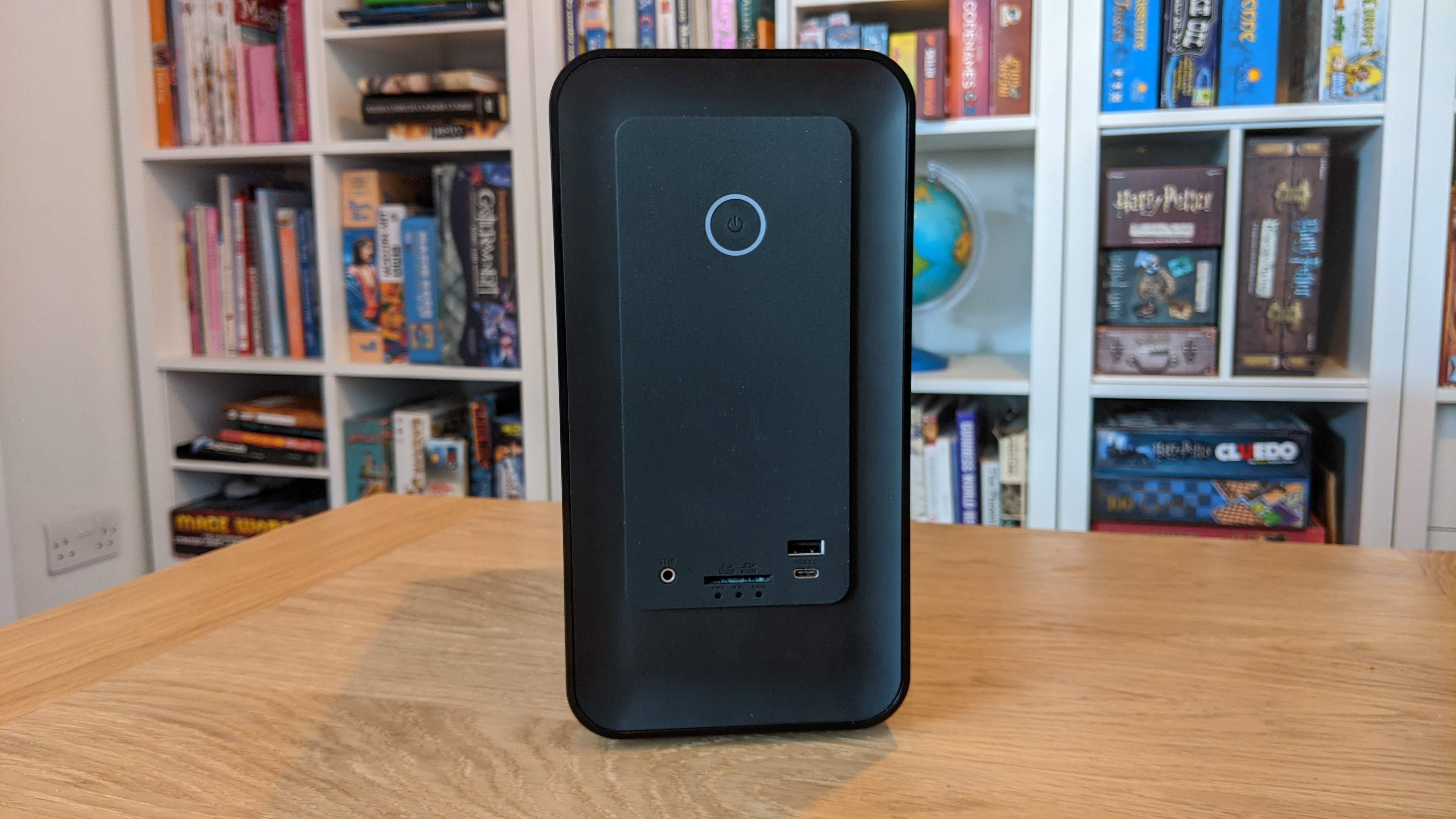
Design
The Magnus One ships in a box that's slightly smaller than the average desktop PC. That box, when opened, reveals something far more compact, a super-dense case surrounded by very generous packing material - this thing is small.
Modern console small. Compact toaster small. So small it skims the very edges of what's possible with replaceable discrete graphics on board. Not quite Ghost Canyon NUC small, admittedly, with this sporting an 8.3L volume to the Ghost Canyon's 5L, but that space gives it more airflow space and makes the Magnus One far less challenging on the fingers when it comes to getting to work.
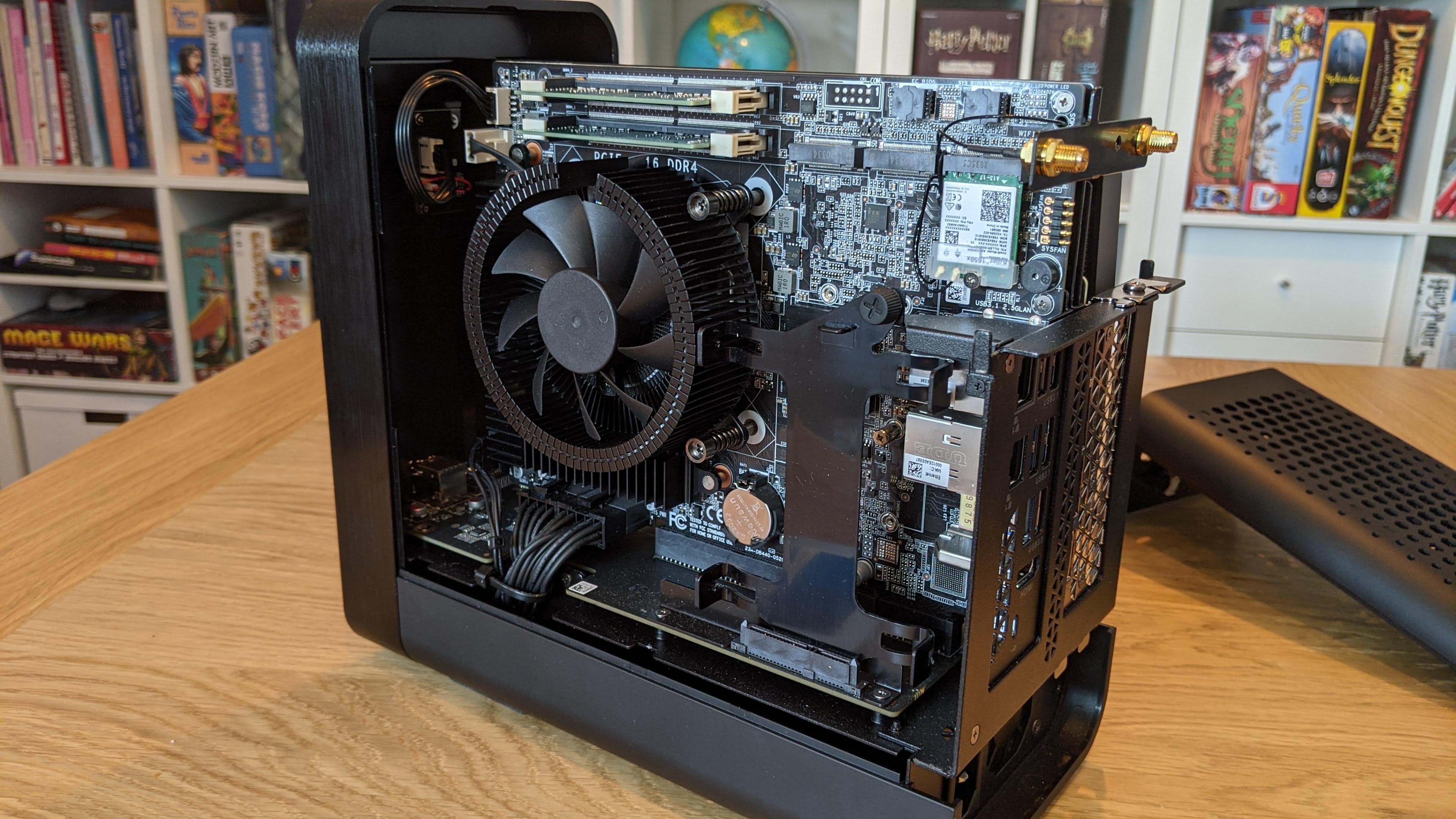
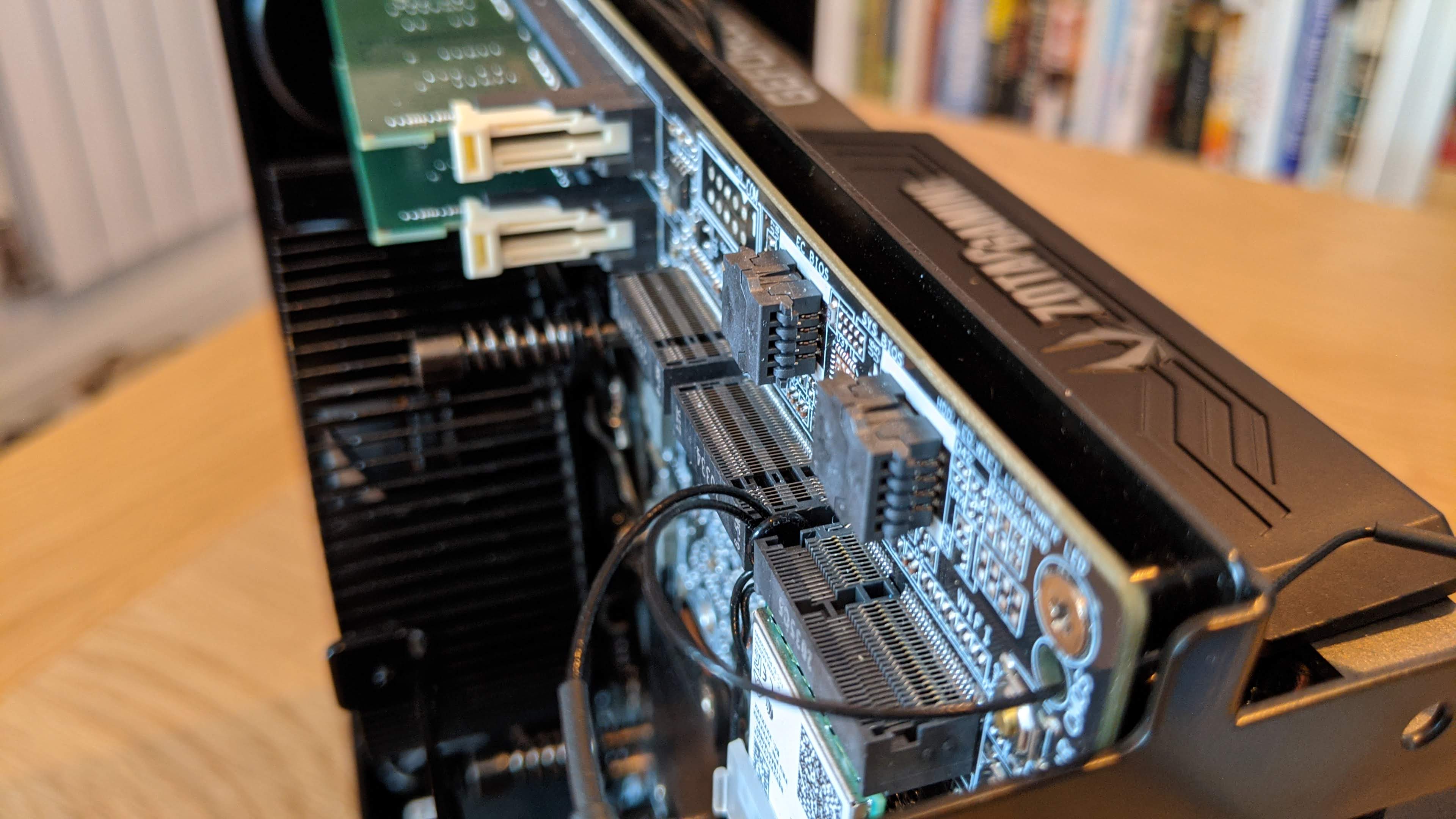
Opening the machine itself to install the required extras (this barebones edition doesn't ship with RAM, so you'll need to supply your own DDR4 SO-DIMMS, and storage is on you too) shows this is a PC of two halves and some very clever design.
The motherboard section puts everything you'll need front-facing, including a pair of M.2 x4 slots - one of which supports Optane - and a nifty cable-free SSD mounting bracket, which connects your drive to the Magnus One's backplane. Follow that daughterboard along to the graphics card compartment, and you'll find it also taking care of the PCI Express x16 duties of the included Zotac RTX 3070 Twin Edge card, which is entirely replaceable if you need an upgrade, as is the 10th-gen Intel Core i7, socketed rather than soldered-on beneath a compact (if perhaps slightly undercooked) air cooler.
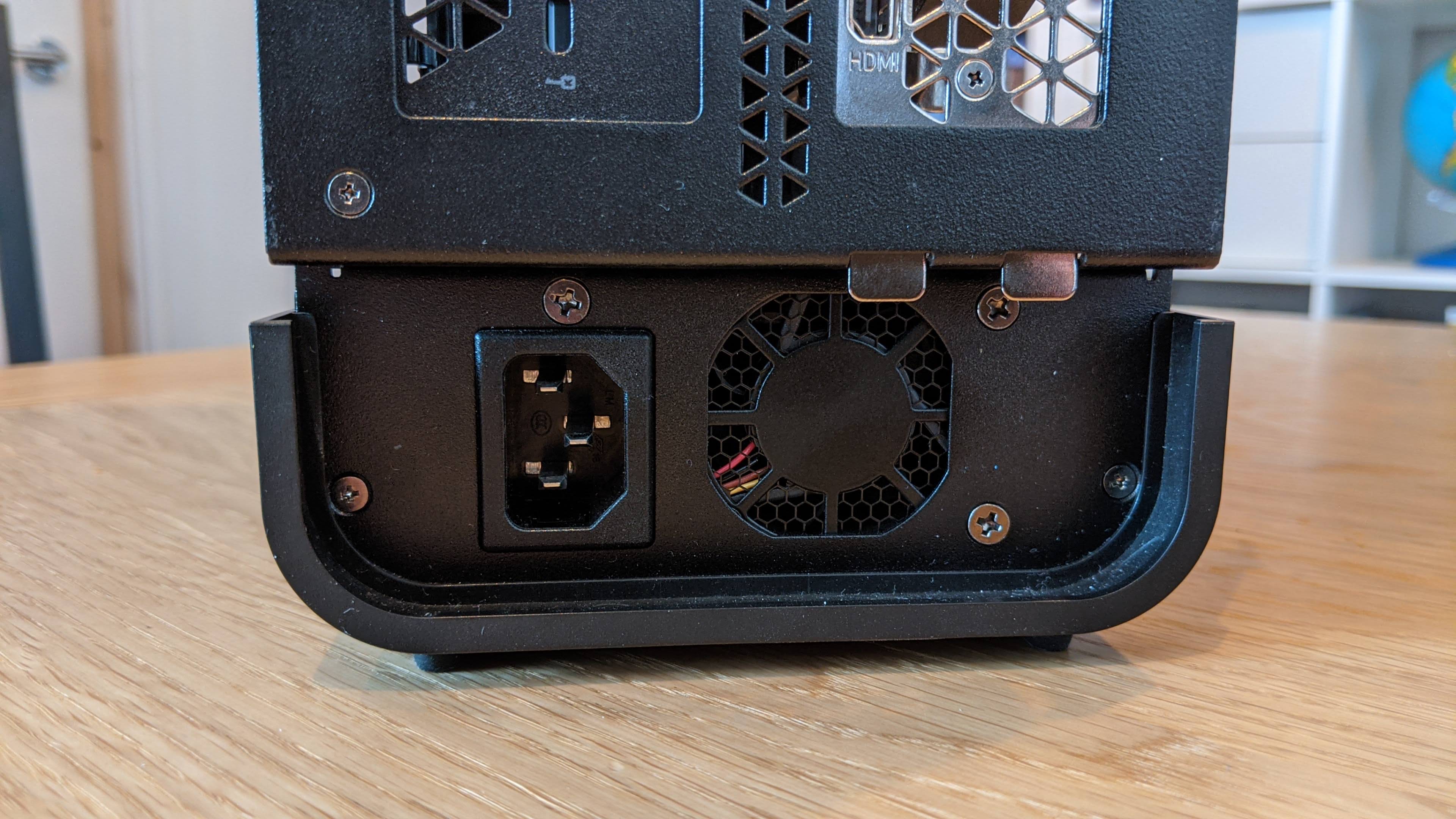
Peep below and you find a cheeky third compartment, one containing a super-compact 500W PSU, meaning this doesn't need an external power brick; an extra pair of fans sits along the top edge, connected to the motherboard by a sprung pressure-fit header. This is reassuringly sturdy, and the fact that there's no wire makes for easy and foolproof disassembly.
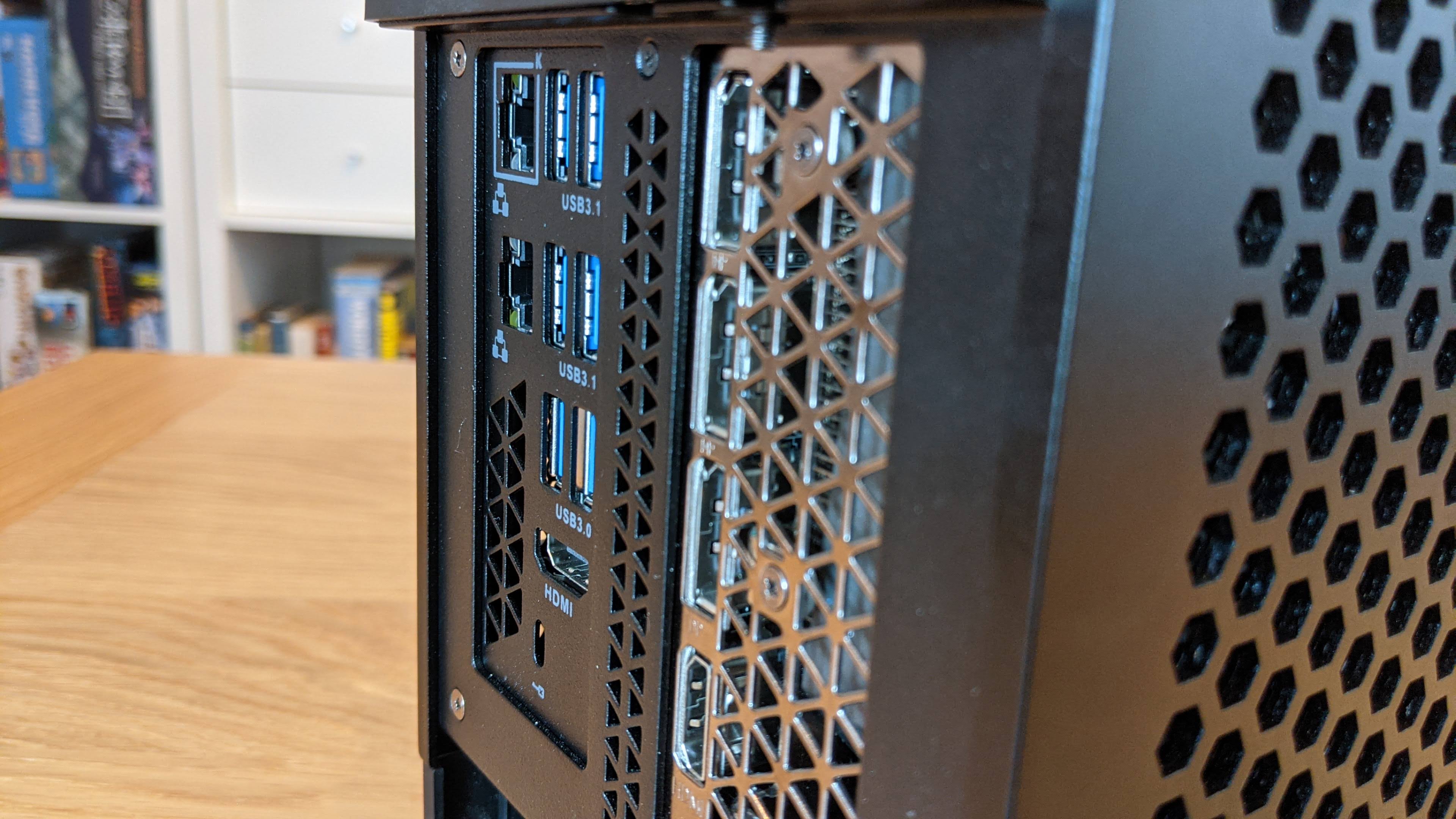
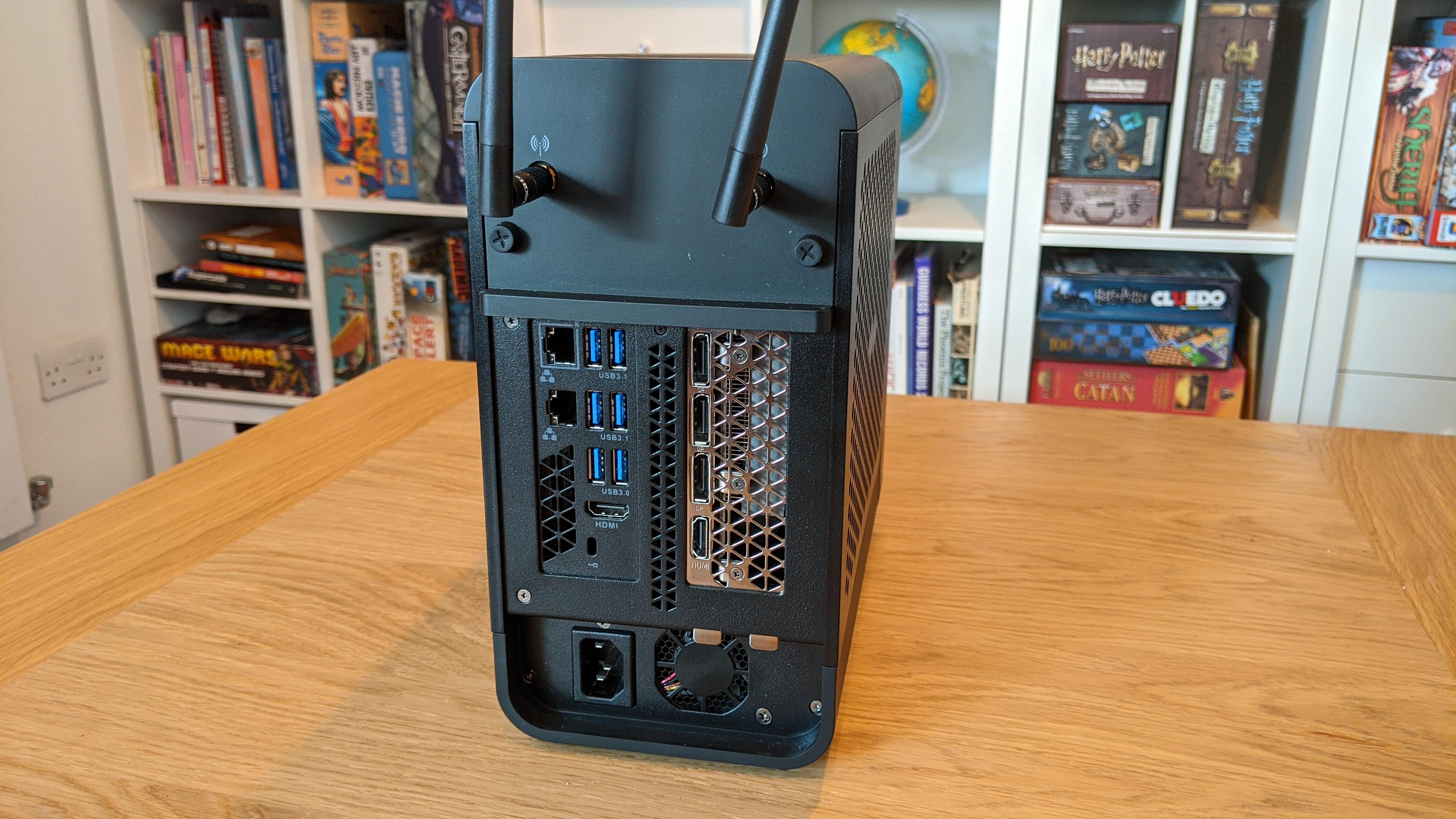
On the outside we're pleased, if not blown away, by the aesthetic choices Zotac has made. It has carried a two-layer honeycomb ventilation pattern over all edges bar the front and back; this isn't filtered, so you'll want to regularly get inside to make sure things aren't too dust-caked, but it is very generous - there's little chance of the Magnus One ever getting choked.
The front panel is subtle if unexciting, with a single USB 3.0 Type-A and a USB 3.0 Type-C as well as a full-sized SD card reader and combo audio jack - six more Type-A ports (two of them USB 3.0, four USB 3.1) hide around the back, as well as a pair of Ethernet connections (one gigabit, one 2.5gig) and the antennas for the Killer Wi-Fi 6 card.
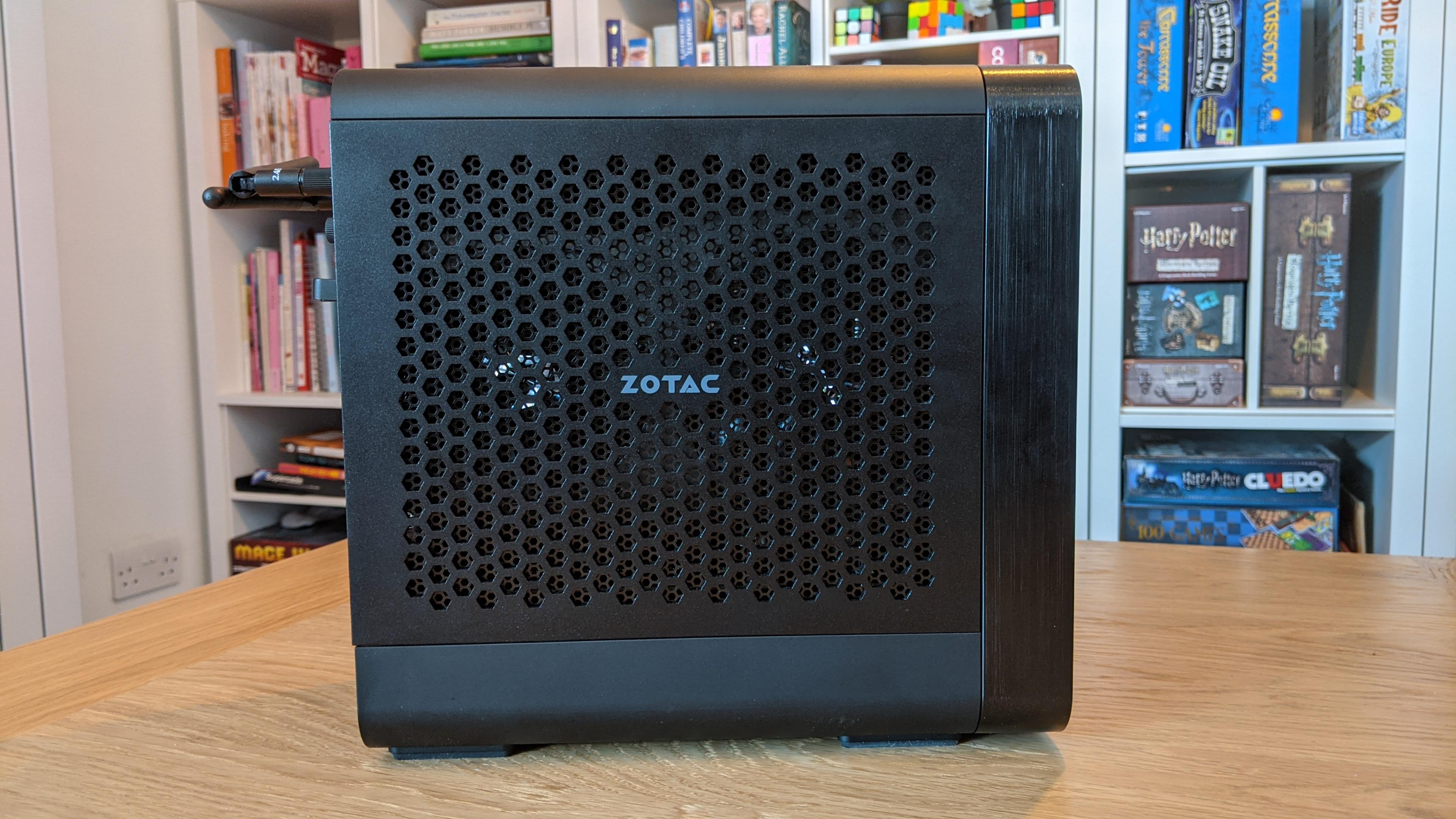
Performance
Here's how the Zotac Zbox Magnus One ECM73070C performed in our suite of benchmark tests:
3DMark: Sky Diver: 49,710; Fire Strike: 23,672; Time Spy: 11,724
Cinebench CPU: 3,491 points
GeekBench 5: 1,293 (single-core); 7,227 (multi-core)
PCMark 10 (Home Test): 6,307 points
Total War: Three Kingdoms (1080p, Ultra): 96.2 fps; (1080p, Low): 248.5 fps
Metro Exodus (1080p, Ultra): 85.76 fps; (1080p, Low): 96.7 fps
We could insult your intelligence and say the power packed into the ZBox Magnus One's diminutive shell was in some way surprising, but it's not. Intel's Comet Lake Core i7-10700 absolutely screams along, making the most of every transistor in its eight core, 16 thread design. There are faster chips, but for the price this is totally capable CPU, and you can drop in a Socket 1200 replacement without issue.
The same can be said for the GeForce RTX 3070, every bit the generational leap it promised to be, and a true powerhouse in our benchmark tests. It ripped through Metro Exodus (a game which struggles to hit 60fps on the RTX 2070) and destroyed Total War: Three Kingdoms, while performing very admirably on synthetic benchmarks too.
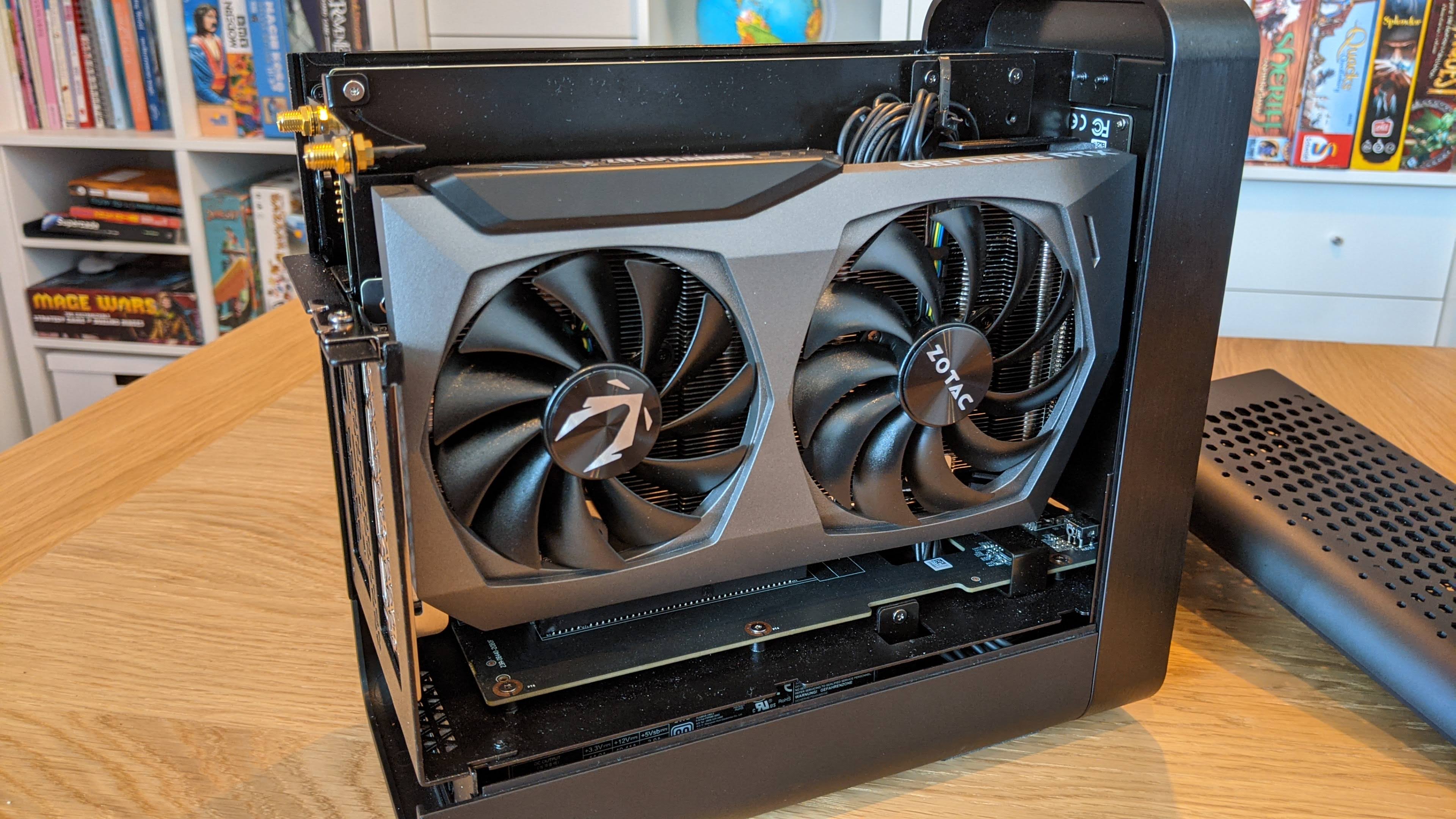
Actually playing games on this was a joy, to the point that we struggled to find the motivation to even finish this review; desktop operation is as slick as you'd expect from a machine of this caliber, though our choice to put in a SATA SSD likely hampered its transfer speeds, and we would absolutely favour adding a good M.2 drive if you were making the choice.
Here's the thing, though: a machine like this isn't really meant to be judged on how fast it can push a pixel. Just looking at the specs is enough to tell you that, yes, it's plenty muscular enough to handle whatever whatever you can throw at it, and Zotac sees the Magnus as more of a creative powerhouse than a gaming workhorse. But can it do that without making a huge fuss? Eh, not so much.
Zotac has, as we've discussed, offered this some very generous ventilation, and when you're just clicking around the desktop it's super-quiet. The compartmentalised cooling works well and is laid out logically, the graphics card pulling in from the side and exhausting from the back, and the CPU pushing its air out of the side. It makes thermal throttling a relative rarity. Push things, though, and this really does get very noisy; the small PSU fan works hard, the top fans ramp up a long way, and you sense a real fight to keep things on the level - but one which quickly scales back to a manageable level once you're done.
With no passive or water cooling this isn't a surprise, of course. Asking a machine this loaded and this compact to also be quiet would be a bit much. But it's absolutely worth bearing in mind that with great power comes great audibility.
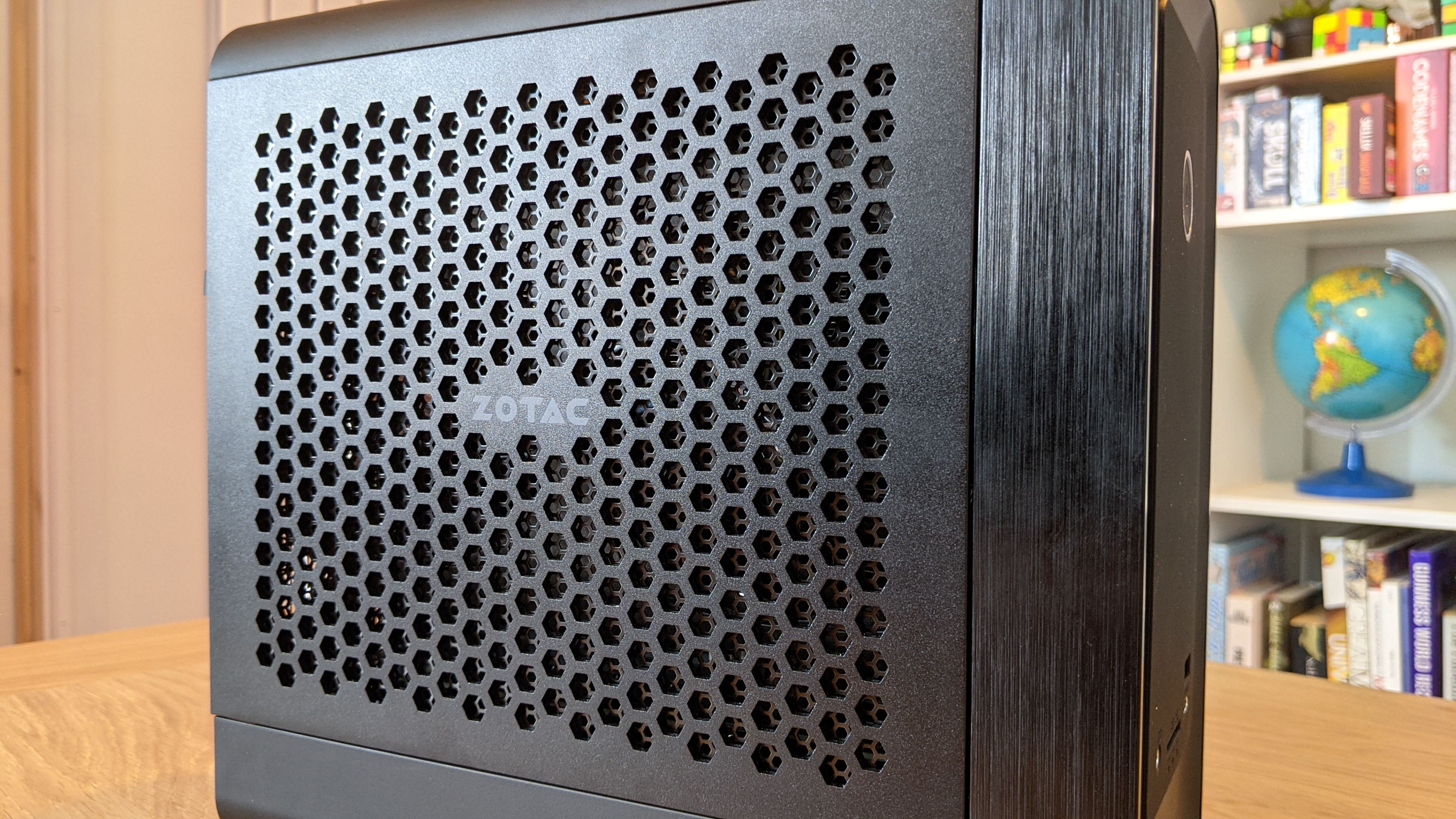
Buy it if...
You want a pre-built route to power
Building your own PC isn't for everyone. Building one this compact is a challenge even for experts. Zotac's barebones machine gives you options in terms of RAM and storage, but all the hard work is done for you.
Desk space is crucial
The Zotac Zbox Magnus One's footprint is absolutely minimal, so you won't have any trouble finding somewhere for it to sit - though you do make sure it gets proper airflow from all sides.
You need 30-series muscle today
Given the rarity and aftermarket pricing of Nvidia's current hardware, this is a great route to getting your hands on a machine that really packs a punch, and one which could accept a new GPU in the future, too.
Don't buy it if...
Silence is golden
This is plenty quiet when not under load but becomes very audible once you start working those components hard, and it kicks out a lot of heat.
Aesthetics are a concern
It's not offensive by any means, but we can't call this subtle design exciting in the RGB-heavy PC space. It's built for space efficiency - the wow you'll get from friends will be from its size, not any flashing lights.
You're into PC building
The size of the Magnus One does not leave a lot of room for experimentation, and while there's an upgrade path for those who want it you'll need to be selective with the components you use.
- These are the best computers of 2021
